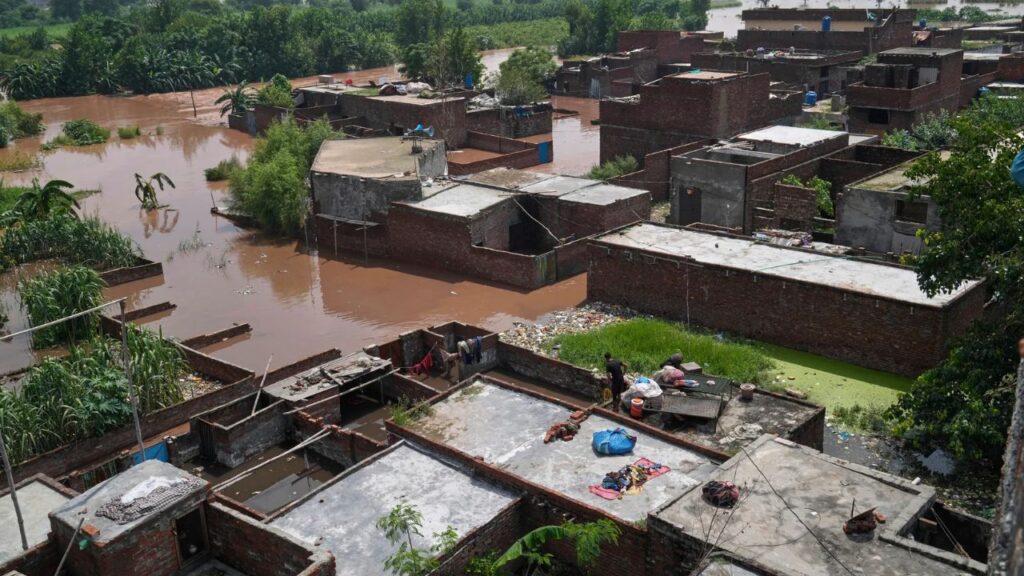
Torrential rains have triggered catastrophic flooding in eastern Pakistan, forcing nearly half a million people from their homes and leaving villages along major rivers submerged. Authorities say the disaster marks one of the most extensive rescue efforts in Punjab’s history.
According to the Punjab Disaster Management Authority (PDMA), at least 835 people have lost their lives since the monsoon season began on June 26, including 195 in Punjab province alone. The latest wave of flooding has left more than 1.5 million people affected across the region.
Three transboundary rivers — the Chenab, Ravi and Sutlej — have swelled simultaneously to record levels, inundating more than 2,300 villages. To manage the unprecedented deluge, officials have carried out controlled breaches of protective embankments, diverting water to limit damage in densely populated areas.
Nabeel Javed, who leads the provincial government’s relief services, confirmed on Saturday that around 481,000 people and 405,000 livestock had been evacuated from flood-hit districts. “This is the biggest rescue operation in Punjab’s history,” PDMA chief Irfan Ali Khan told reporters, noting that more than 800 boats and 1,300 personnel were working around the clock.
Over 500 relief camps have been established to shelter displaced families, though many survivors report struggling to save their belongings and livestock. Farmers in Kasur and surrounding areas said the rising water had wiped out their crops and homes. “The floods destroyed everything. I barely managed to save my cattle,” one farmer said.
In Lahore, Pakistan’s second-largest city, entire neighborhoods were partially submerged, forcing families to seek refuge in schools and community centers. Rain continued throughout Saturday, worsening conditions in urban and rural areas alike.
The Pakistan Meteorological Department (PMD) has forecast fresh rounds of heavy rain, wind, and thunderstorms in multiple provinces. The scale of this year’s monsoon devastation comes just three years after the 2022 floods that submerged a third of the country, displacing millions and causing widespread economic losses.
Earlier this month, more than 400 people were killed by landslides in Khyber Pakhtunkhwa province following days of torrential rain, underscoring the nationwide toll of climate-driven weather extremes.
As relief operations continue, authorities have pledged that “no human life will be left unattended.” But with crops, homes, and livelihoods swept away, many communities remain fearful of what the weeks ahead may bring.






